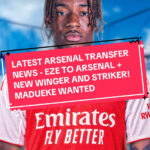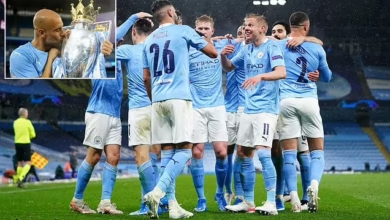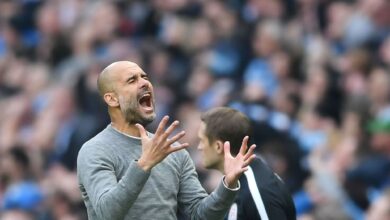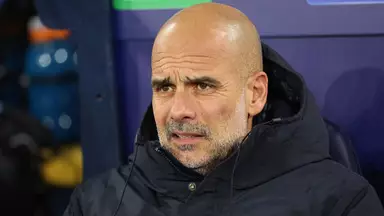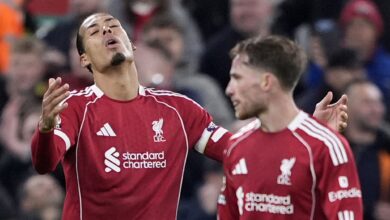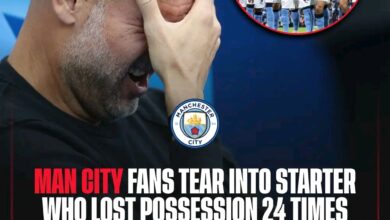Eberechi Eze to Arsenal transfer demand becomes clear as three players at risk
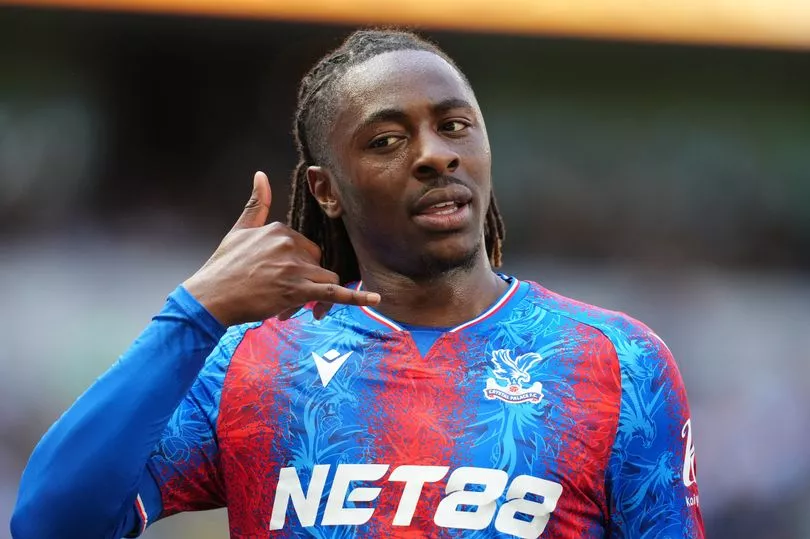
Eberechi Eze finds himself at a career crossroads that could define the trajectory of his footballing journey. With just two years remaining on his Crystal Palace contract and mounting interest from elite Premier League clubs, the 26-year-old attacking midfielder stands on the precipice of a potentially transformative move. For Arsenal, who have been meticulously building toward sustained Premier League title challenges and Champions League success, Eze represents more than just another talented acquisition – he embodies the tactical flexibility, creative spark, and proven Premier League experience that could elevate Mikel Arteta’s squad to new heights.
The timing couldn’t be more opportune for all parties involved. Crystal Palace, despite their best efforts to retain their star player, recognize the inevitable nature of elite football economics. Players of Eze’s caliber, having consistently delivered exceptional performances over multiple seasons, naturally gravitate toward clubs offering Champions League football and genuine title aspirations. For Arsenal, the pursuit represents a strategic investment in both immediate impact and long-term squad development, addressing multiple positional needs while adding a player who has already proven his mettle at the highest domestic level.
Over the past three seasons, Eze has compiled statistics that place him among the Premier League’s most productive attacking midfielders and wingers. His record of 29 goals and 16 assists across multiple campaigns for a Crystal Palace team that has predominantly occupied mid-table positions speaks volumes about his individual brilliance and ability to influence matches regardless of team dynamics. These numbers become even more impressive when contextualized within Palace’s often defensive-minded approach and limited creative support compared to elite clubs.
His breakthrough 2020/21 campaign, where he contributed to 10 goals as a Championship graduate adapting to Premier League intensity, demonstrated remarkable composure and maturity for a young player making such a significant step up in competition level. The subsequent injury-hit 2021/22 season, rather than derailing his progress, seemed to fuel an even more determined comeback that has established him as Crystal Palace’s undisputed creative fulcrum.
The 2023/24 season proved particularly significant in showcasing Eze’s evolution as a player. With Michael Olise’s departure removing another key creative outlet, Eze shouldered increased responsibility and delivered career-best performances. His ability to consistently threaten opposition defenses, create scoring opportunities for teammates, and contribute crucial goals in tight matches has made him indispensable to Crystal Palace’s tactical setup
Perhaps no aspect of Eze’s game is more valuable to a coach like Mikel Arteta than his extraordinary positional versatility. Throughout his career, Eze has demonstrated competence and excellence across multiple attacking positions, making him the type of tactical Swiss Army knife that elite clubs covet. His experience operating as a traditional winger on both flanks, an attacking midfielder in various formations, and even as a deeper-lying playmaker provides Arteta with unprecedented tactical flexibility.
Under Oliver Glasner’s tactical system at Crystal Palace, Eze has thrived in the split number 10 role, operating on both sides of the pitch depending on match situations and opponent weaknesses. This adaptability reflects not just technical ability but also tactical intelligence and positional awareness that suggests he could seamlessly integrate into Arsenal’s sophisticated tactical framework.
For Arsenal, this versatility addresses multiple squad needs simultaneously. The Gunners have long sought reliable competition and cover for Bukayo Saka on the right wing, recognizing that over-reliance on their young star could prove problematic during a demanding season. Eze’s proven ability to operate effectively from the right flank, combined with his different stylistic approach to Saka’s direct pace-oriented game, would provide Arteta with valuable tactical options.
Similarly, the left wing position, where Gabriel Martinelli has established himself as first choice, would benefit from genuine competition. Eze’s ability to drift inside, create overloads in central areas, and provide different types of threats compared to Martinelli’s more traditional wing play could prove invaluable in breaking down defensive structures that have learned to nullify Arsenal’s current attacking patterns.
Perhaps most intriguingly, Eze’s potential role as cover and competition for Martin Odegaard in the number 10 position represents a strategic masterstroke. Odegaard’s importance to Arsenal’s creative output cannot be overstated – his injury-enforced absence during crucial periods of recent seasons has repeatedly exposed the team’s over-reliance on their Norwegian captain for chance creation and tactical progression.
Arsenal’s attempts to address this vulnerability by deploying teenager Ethan Nwaneri in such a crucial role, while admirable from a youth development perspective, highlights the urgent need for proven senior alternatives. Eze’s experience, technical ability, and understanding of Premier League demands make him the ideal candidate to provide both reliable cover and genuine competition for Odegaard.
The tactical nuances of how Eze might operate in this role present fascinating possibilities. While Odegaard excels at finding space between lines and delivering precise through balls with his exceptional right foot, Eze offers a more dynamic, dribble-heavy approach that could unlock different types of defensive structures. His ability to carry the ball through pressure, combined with his proven finishing ability from midfield positions, adds dimensions that could make Arsenal’s attack even more unpredictable.
Eze’s development into a full England international provides crucial validation of his readiness for elite-level football. International recognition at senior level, particularly in England’s competitive modern setup, requires consistent high-level performance and tactical understanding that translates directly to Champions League football. His international experience, while still developing, suggests he possesses the mental fortitude and technical ability to thrive on European football’s biggest stages.
The transition from Crystal Palace to Arsenal wouldn’t just represent a step up in terms of competition quality – it would provide Eze with the platform to showcase his abilities in Champions League knockout rounds, where individual brilliance often proves decisive. His demonstrated ability to perform in high-pressure situations, exemplified by his crucial contributions in Crystal Palace’s FA Cup run, suggests he possesses the temperament required for European competition’s intense atmospheres.
Furthermore, his international experience provides insight into how he might adapt to playing alongside higher-caliber teammates. The jump from Palace’s supporting cast to Arsenal’s array of technical players like Odegaard, Saka, and new potential signings would likely elevate his own performance levels through improved chemistry and understanding
Eze’s performances during Crystal Palace’s memorable FA Cup campaign provided perhaps the clearest indication of his readiness for elite-level football. His two crucial goals at Wembley Stadium – first in the semi-final against Aston Villa and then in the final – demonstrated not just technical excellence but also the psychological strength required to perform on football’s biggest stages.
The semi-final goal against Villa showcased his ability to create scoring opportunities from seemingly innocuous positions. His quick recognition of the developing situation, combined with precise technique under pressure, resulted in a crucial goal that exemplified his match-winning potential. The curled finish demonstrated the type of composure and technical execution that elite clubs demand from their key players.
The final goal proved even more significant in terms of tactical application. His positioning to meet the cutback, combined with the first-time finish, reflected excellent anticipation and clinical finishing ability. The manner in which he connected with the opportunity – reminiscent of Odegaard’s trademark finishes from similar positions – suggested natural tactical intelligence that would translate seamlessly to Arsenal’s more complex attacking patterns.
These performances weren’t isolated incidents but rather representations of consistent qualities that Eze has displayed throughout his Crystal Palace career. His ability to elevate his performance level for crucial matches, combined with his demonstrated composure in high-pressure situations, provides strong evidence for his potential impact at Arsenal.
The potential signing of Eze would create a fascinating dynamic within Arsenal’s attacking contingent. Current players like Mikel Merino, Gabriel Martinelli, Leandro Trossard, and even established stars like Odegaard and Saka would face increased competition for starting positions. This competitive environment, rather than creating divisive tension, would likely elevate overall squad performance levels.
Merino, who has shown flashes of brilliance since his arrival but has yet to establish consistent starting status, would benefit from having another creative midfielder in the squad. The competition could drive both players to higher performance levels while providing Arteta with different tactical options depending on opponent strengths and match situations.
Martinelli and Trossard, both excellent players in their own right, would need to consistently perform at peak levels to maintain starting positions. This internal competition has proven beneficial for elite clubs, creating an environment where complacency becomes impossible and every training session carries meaningful consequences.
Even established stars like Saka and Odegaard would benefit from reduced pressure and increased tactical flexibility. Knowing that capable alternatives exist allows players to take calculated risks, recover from poor performances more quickly, and approach each match with confidence rather than the burden of knowing their absence would significantly weaken the team.
From a financial perspective, pursuing Eze represents both an opportunity and a challenge for Arsenal. His current contract situation, with two years remaining, places Crystal Palace in a stronger negotiating position than they might prefer, but also creates urgency for both player and selling club to reach resolution before his value potentially diminishes closer to contract expiration.
Arsenal’s recent transfer strategy has emphasized strategic investments in players entering their peak years, balancing immediate impact potential with long-term value retention. Eze, at 26, fits perfectly within this philosophy – old enough to provide immediate contributions while young enough to remain valuable for multiple seasons.
The competitive market for attacking midfielders of Eze’s caliber means Arsenal must be prepared to meet Crystal Palace’s valuation or risk losing him to rival clubs. However, his proven Premier League experience, tactical versatility, and English nationality represent premium value that justifies significant investment.
Mikel Arteta’s tactical evolution at Arsenal has consistently emphasized tactical flexibility and positional interchangeability among attacking players. Eze’s skillset aligns perfectly with these principles, offering the Spanish coach numerous options for tactical variation within matches and across different opponent preparations.
In Arsenal’s current 4-3-3 formation, Eze could seamlessly integrate into any of the front three positions while also providing cover for the advanced midfield role. His ability to drift between positions during matches would create the type of tactical fluidity that has become Arteta’s signature, making Arsenal’s attack incredibly difficult to defend against.
The potential for rotating Eze between different positions throughout a match presents intriguing tactical possibilities. Starting on the left wing before moving centrally as matches develop, or beginning in a midfield role before drifting wide to exploit defensive gaps, would provide Arteta with in-game tactical adjustments that could prove decisive in tight matches.
The arrival of a player of Eze’s caliber would inevitably affect current squad dynamics, but the changes would likely prove beneficial for Arsenal’s overall development. Players currently operating in similar positions would face genuine competition for the first time in several seasons, creating an environment where consistent high performance becomes essential rather than optional.
This competitive pressure extends beyond just starting eleven selection. Training intensity, tactical application, and professional standards all improve when squad members understand that opportunities exist for others to claim their positions. The psychological impact of having genuine alternatives available also reduces pressure on individual players, allowing them to take calculated risks and express their creativity more freely.
Beyond immediate tactical benefits, Eze’s potential signing represents significant long-term strategic value for Arsenal. His age profile suggests he could remain effective for at least four to five seasons, providing stability and consistency during Arsenal’s crucial development phase as they establish themselves among European elite
His English nationality also provides valuable benefits in terms of squad registration requirements and homegrown player quotas. These administrative advantages, while not primary considerations, add additional value to his potential signing and demonstrate Arsenal’s strategic thinking beyond purely tactical considerations.
Eberechi Eze’s potential move to Arsenal represents far more than a simple squad addition – it embodies the type of strategic thinking that separates successful clubs from those that merely aspire to success. His combination of proven Premier League excellence, tactical versatility, creative ability, and leadership potential addresses multiple squad needs while adding depth and competition across several positions.
For Arsenal, operating at a crucial juncture in their development as they seek to establish consistent title challenges and Champions League success, Eze represents the type of signing that could prove transformative. His ability to impact matches from various positions, combined with his experience performing under pressure and his continued development potential, makes him an ideal addition to Arteta’s evolving squad.
The coming transfer windows will prove crucial in determining whether Arsenal can successfully negotiate this potentially game-changing signing. For Eze, the opportunity to join a club with genuine title ambitions while working under a coach known for developing attacking players represents the logical next step in his impressive career progression.
Should this transfer materialize, it would represent not just a successful piece of business but a statement of intent from Arsenal about their commitment to competing at the highest levels of domestic and European football. In Eberechi Eze, they would be acquiring not just a talented player, but a missing piece in their tactical puzzle that could unlock new levels of performance across the entire squad.

